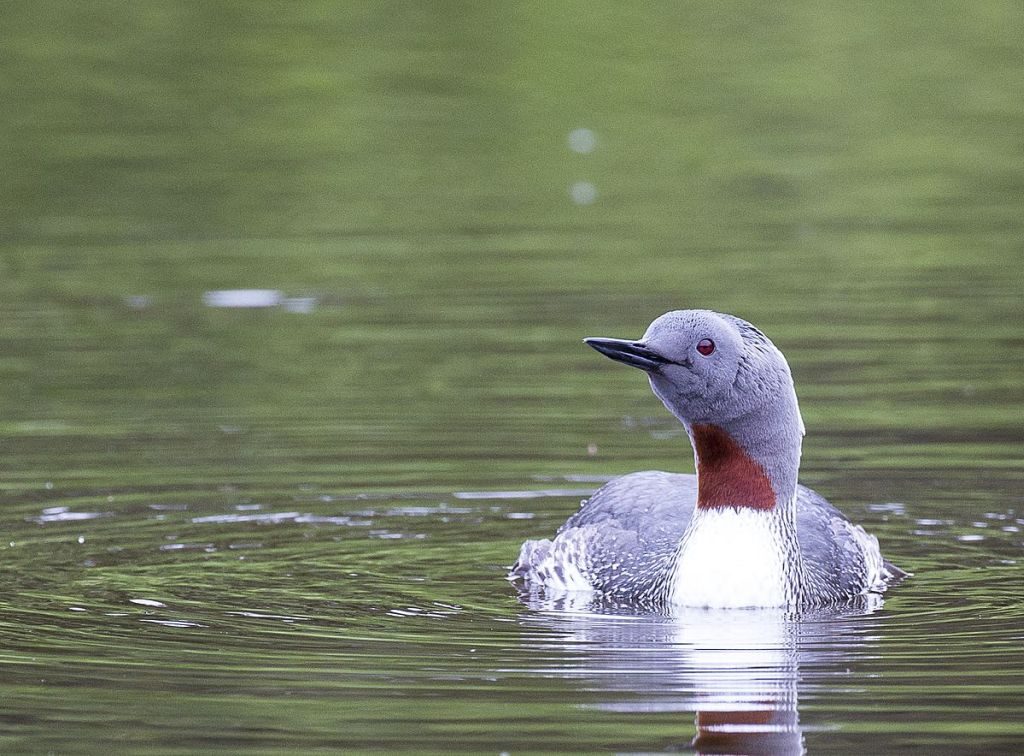
Alaska Birding with PIB: In Anchorage 13 June 2019
Our Alaska birding checklist includes five birds whose names begin with “red-necked” or “red-throated.” Though I’ve seen three of them in winter in the Lower 48, they weren’t wearing red. It will be a treat to see them in breeding plumage.
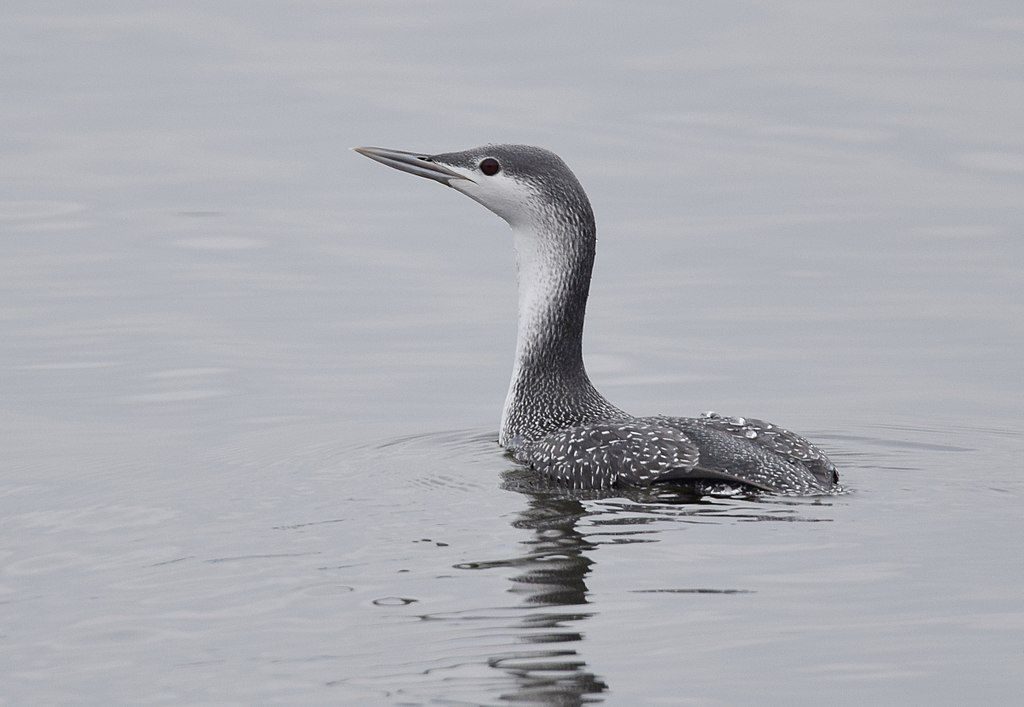
Smallest and lightest of the loons, the red-throated loon (Gavia stellata, photos above) spends summer at northern high latitudes and winter on the coasts of Eurasia and North America. I’ve seen one or two in Pennsylvania on migration but they were colorless with pale throats and mottled gray backs. What a difference breeding plumage makes!
Red-necked grebes (Podiceps grisegena) come to Pittsburgh’s rivers during very cold winters but they don’t look this pretty. In the breeding season they engage in elaborate, vocal displays that show off their red necks and black crests. This video from Germany shows several rituals including the Greeting Ceremony with head turning and the Weed Ceremony with nesting material. Red-necked grebes nest in Alaska, too, so I hope to see them courting.
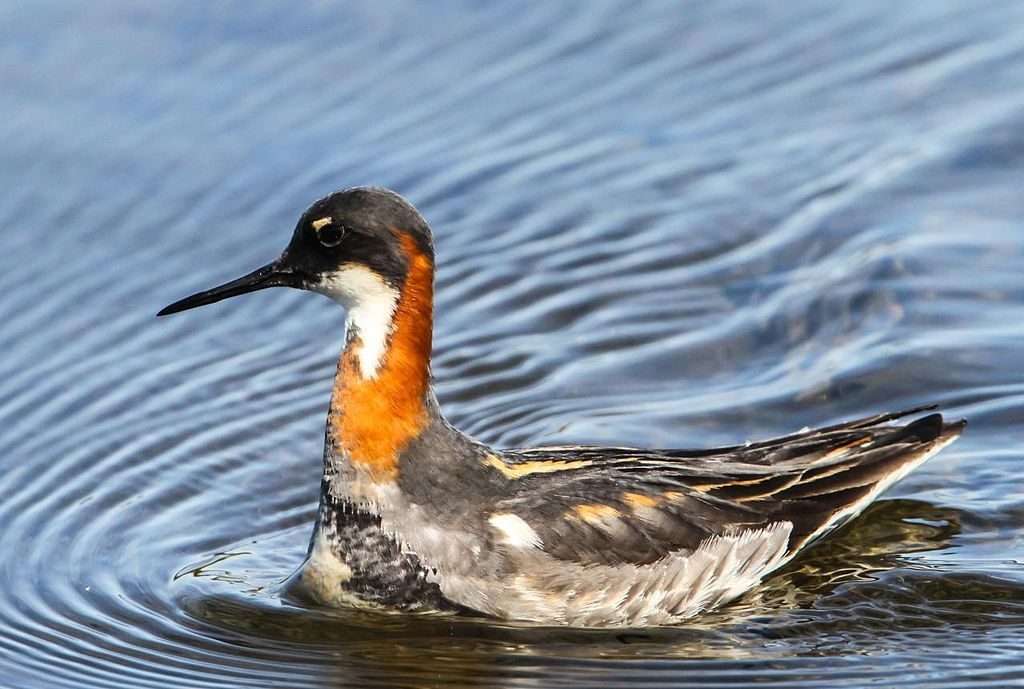
Red-necked phalaropes (Phalaropus lobatus) never come to Pittsburgh though I’ve seen them in the Gulf of Maine. Like all phalaropes they are full of contradictions. They are wading shorebirds that spend the winter far from land. They reverse the typical sex roles: The female is larger, more colorful, and has many mates. The male stays at home to incubate the eggs and raise the young. Most of the year they don’t have red necks.
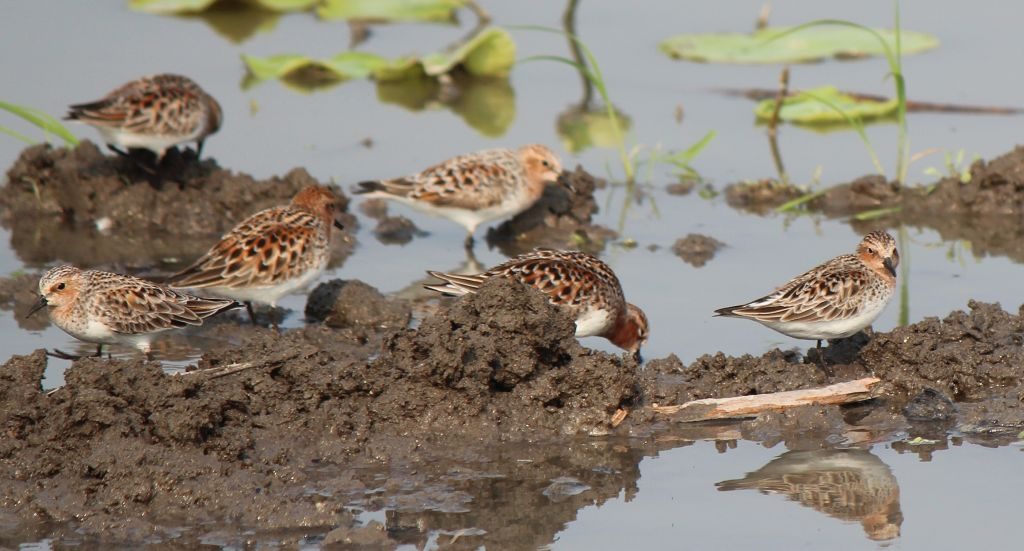
Red-necked stints (Calidris ruficollis) are red in summer (above) and white in winter (below). They look like other sandpipers but they’re special in North America.
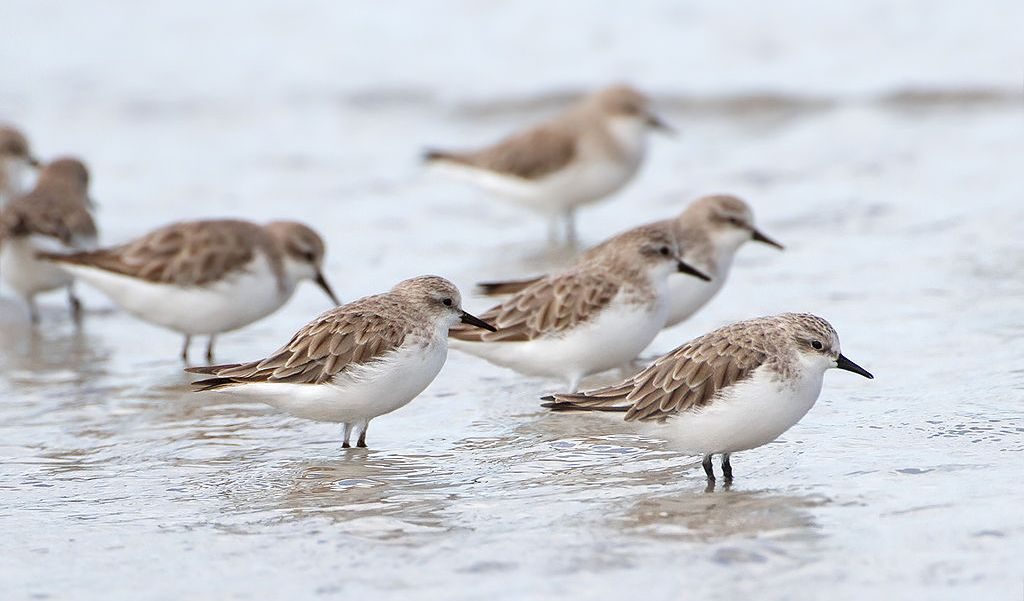
Red-necked stints breed in Siberia and northwestern Alaska and spend the winter in Southeast Asia, Indonesia, Australia and New Zealand. Their range map shows they breed at Nome so I stand a good chance of seeing them. If I do they’ll be a Life Bird.
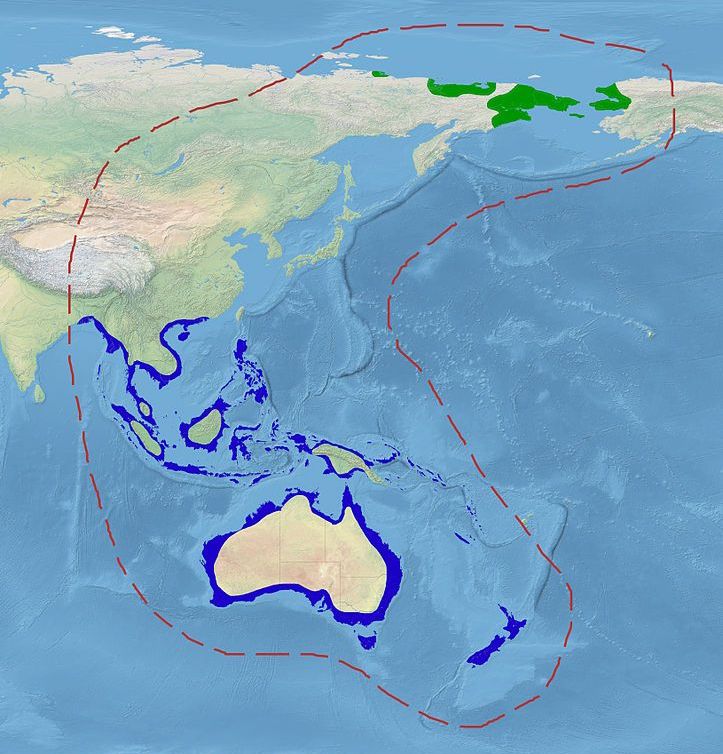
The red-throated pipit (Anthus cervinus) is a long shot on my Alaska trip.
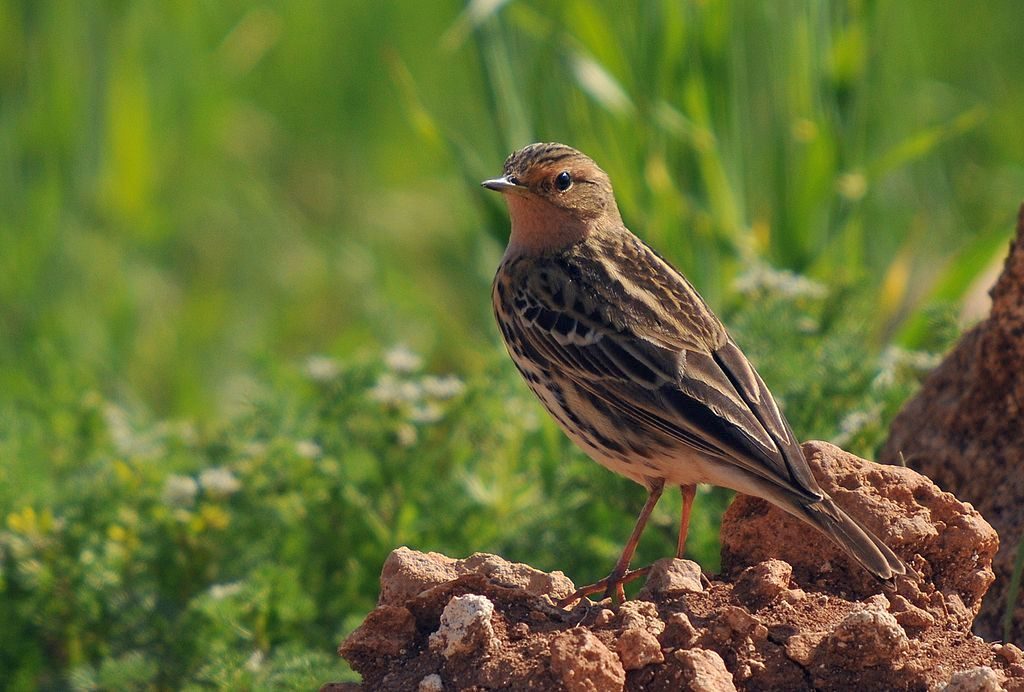
Not abundant in North America, they’re mostly Eurasian birds with a small population that crosses the Bering Sea to breed north of Nome. To see this Life Bird I will have to be farther north than Nome, the bird will have to come a bit south, and the weather will have to be good. Fingers crossed!
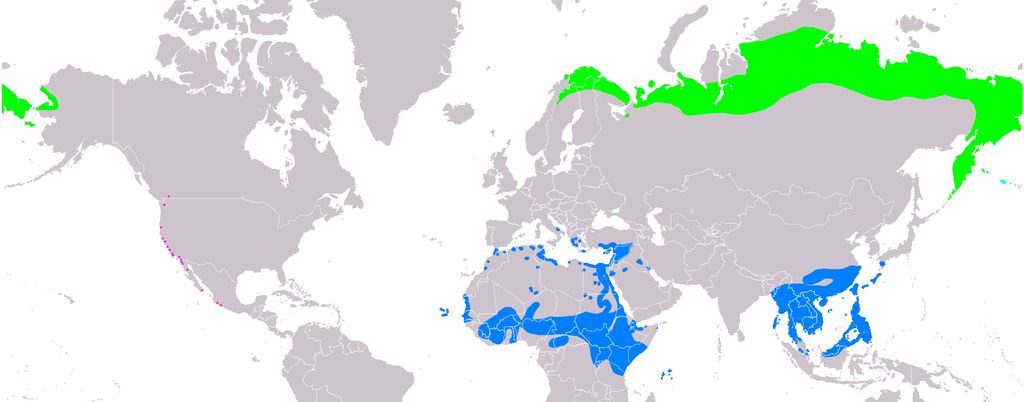
(photos from Wikimedia Commons, click on the captions to see the originals)